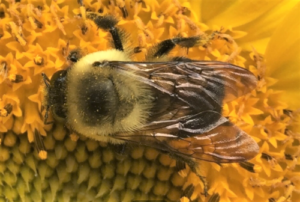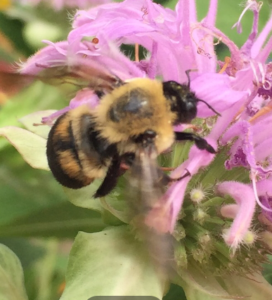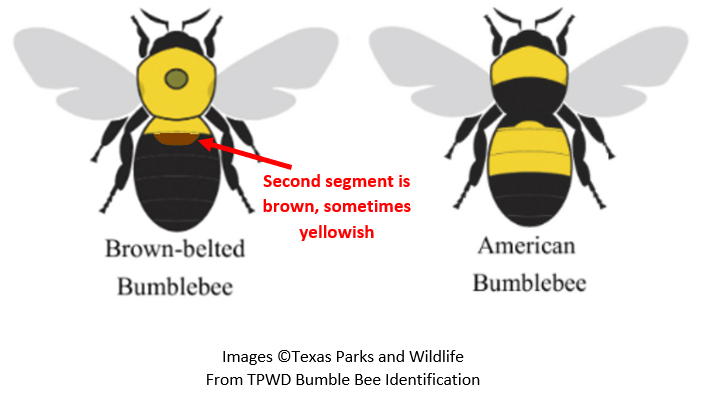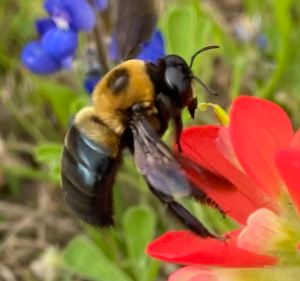
Brown-Belted Bumblebee (Bombus griseocollis)
Meet Houston’s newest native bee, the Brown-Belted Bumblebee! Named for the distinctive brown stripe around its abdomen, it can quickly be identified by its yellow thorax with a dark spot in the middle. The Brown-Belted Bumblebee is one of our largest fuzzy bees with queens up to 1 inch long.

Notice the second abdominal stripe is brownish-yellow.
So why is this a big deal? Well until recently Houston has only had one bumblebee species, the American Bumblebee (Bombus pensylvanicus). Both bumblebee species are similarly sized, but have different color markings. Texas Parks and Wildlife created a handy guide to bumblebees that can help you distinguish between them in your yard.

The Brown-Belted Bumblebee can be confused with our most common large bee, the Texas Carpenter Bee (Xylocopa virginica texana) because they both have a dark spot on their back. The major difference between carpenter bees and bumblebees is carpenter bees have bare, hairless abdomens while bumblebees are completely covered in hair. They also have different lifestyles. Carpenter bees dig nests in wood, while bumblebees make nests in the ground.

The Texas Carpenter Bee has a bare, hairless abdomen past the first segment.
Although the Brown-Belted Bumblebee has a broad range across the United States, it was rarely seen in the Southwest. The first recorded sighting of the Brown-Belted Bumblebee in Houston was in 2019 in Katy by iNaturalist observer prairiegrass. Since 2019 there have only been 5 other reported sightings along I-10 heading inward toward the Heights. Citizen scientist reports like these allow researchers to monitor and track species, and signing up for an account on iNaturalist is free.
With declines in bumblebee species, positive news like a new bumblebee is welcome. If you want to help provide food for them, here is a list of our top 10 pollinator plants, www.houstonnativebees.org/learn/bee-habitats-2/
